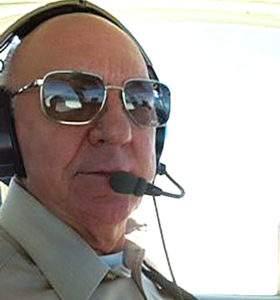By: Pat Andrews, CMS, USAF, Retired

Captain Kent, aka “eagle,” et al,
Greetings from the western “slopes” of the Ozarks.
I thought you might like some fresh real world “there I was” information that concludes with a “kudo” for lessons learned from BPT.
Last week (April 12) I was IFR in N391S (BE55B) from KEOS (Neosho, MO) to T82 (Fredericksburg, TX) for a biennial recertification appointment with Pippen-York Flying Machine Company (they’re an instrument shop that I have used since my days of residence in San Antonio).
All was going well as we approached the “terminal environment.” I had filed with the initial fix of the expected approach as my last waypoint prior to final destination. (T82 was reporting LIFR with a forecast improvement, but my weather pessimism presumed that the “weather officer” would fail me/us again.)
When I made my request for the T82 RNAV 14, Houston informed me of the “dreaded hold” awaiting a Citation’s arrival and subsequent cancellation. Due to the expected “further clearance time” being 15+ minutes from the current time, I used “Step #1” from my training—slow down.
All was normal as we crossed the “UCETI” way point, turned outbound, and setup for the 5k protracted hold. During the inbound leg, I “flow checked” that all settings were as “expected and specified”—all is good. The radio traffic ensued between a departure Mooney, and an assurance that the approach Citation’s tail number was indeed on the ramp. As I closed on “UCETI,” and prepared to make the turn outbound for another “turn in the hold”, I received one of those rapid-fire clearances—I fired back with an acceptance and turned my attention toward the “famous glide slope intercept.”
As the indicator was approaching my “sweet-spot 2-degree highpoint”, the failed-alternator lights illuminated. Simultaneously, the Aspen PFD went into battery mode with a subsequent rapid “countdown” towards total failure. The alternator issue was quickly resolved with a switch to spare voltage controller, but the PFD continued the battery count down towards its ugly darkness.
We were IMC, with a failed PFD, perhaps a correctly forecast/reported 500-foot ceiling, and the prevailing wonderment about the alternator issue—we maintainers start troubleshooting as soon as some information is available, therefore, the nagging question: what’s next?
Seamlessly, I transitioned to my back-up altimeter, airspeed, attitude, and CDI indicators—another “train like we fight/fight like we train” event—landing, roll-out, cancellation, and shut-down were all as expected. It was all so smooth that Penny (sitting in the right seat) never alerted to any exceptional out of the ordinary pilot behavior.
Kudos, accolades, and all of those other complimentary words to you and the BPT cadre of instructors and staff.
Best to all in the coming days,
Pat
Patrick Andrews, CMS, USAF, Retired
(Yes, a former USAF maintenance guy with “Exceptional Release” authorization)
April 22, 2021



